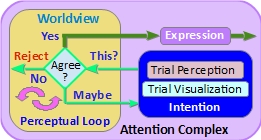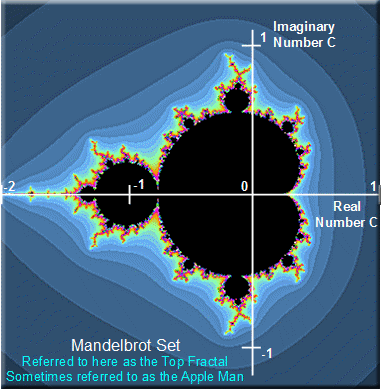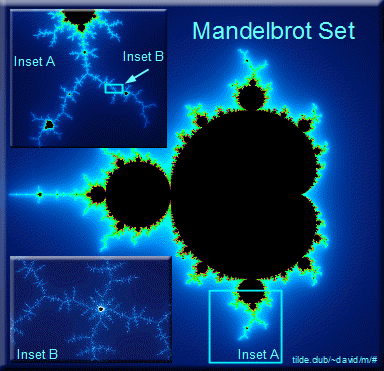Introduction
If the greater reality (aka etheric) is a singularity in the sense that nonlocality means everywhere is here, it is necessary to ask how we move about in the etheric compared to place-to-place movement in the physical. This Brief explains how the Implicit Cosmology supports mind-initiated movement from place-to-place in physical space.
Examples
Consider these experiences that seem to defy physical principles:
Interstellar travel – Considering the great distances between stars, how would it be possible for Unidentified Flying Objects (UFO) to be from other star systems?
Cryptids – There are reports of many other creatures, but using Big Foot as an example, how is it possible for a large animal to exist while leaving so little evidence of their passing?
Orbs – While most photographic orbs are just pictures ruined by flash-illuminated particulates or light flares, some orbs appear to be sentient critters. In some reports, they appear to pass through solid objects. How might such behavior be explained?
Bilocation, time slips and teleportation – There have been report of encounters with people who are supposed to be in another place or time.
Apports – Apports are objects that are reportedly paranormally transported into a place from some other place.
Part of the Explanation
The model proposed here to explain movement in the etheric involves a few important datapoints. Keep in mind that the nonlocal characteristic of the etheric must be thought about in conceptual terms.
Apports
An apport is an object that has been psychokinetically transported from one place to another, presumably by a communicating discarnate personality. Apports are a common phenomenon associated with physical mediumship.
The apport process appears to involve the disassociation of a physical object from its initial location and reassociation of it at the new location. If thought creates the physical, disassociation means that the object is reimagined in the new location. Think of this as the Apport Model.
In this view of reality, everywhere is here so that there is no movement from one location to another. There is only a change in where the object is imagined to be.
Creative Process
The Creative Process is modeled here as a fundamental expression of mind. It is defined as Changes in reality are expressed via personality’s attention on an imagined outcome with the intention to make it so.
The mind expresses a Psi (aka psychokinetic or psychic) influence that represents the imagined outcome. Our conscious review of our perception of this expression produces a sort of steering influence that acts as a feedback signal representing our intention to agree with or change our Psi expression.
Worldview
The “imagined outcome” in the Creative Process is based on the personality’s worldview. Our worldview represents a mental map that determines what we think is true about our reality. It also determines what we expect to experience. If an experience does not agree with what we expect, it may be ignored. If it is close, it will be modified to better agree with what we expect. It is that modified version of which we become aware.
Perceptual Agreement
Perceptual Agreement is defined in the Implicit Cosmology as Personality must be in perceptual agreement with the aspect of reality with which it will associate.
The Attention Complex in the Implicit Cosmology produces expression, some of which we become aware. The agreement part is defined by our worldview. If our mental map of what we think is real does not recognize some aspect of reality, we will not be able to experience it.
The Trial Visualization functional area in the Attention Complex is a critical part of perception formation. Our visualization appears to be entirely based on our worldview. That means the Perceptual Loop breaks if a signal comes in from another personality that does not at least reasonably match our worldview. This produces a Reject result in the loop.

Theory
There seems to be sufficient evidence that the Apport Model can be applied to reported phenomena such as Interstellar travel, cryptids and orbs. Remembering that a concept thoughtform in the Implicit Cosmology may include physical property attributes such as place or timeline. In this view, movement from one place to another would be accomplished by disassociating our perception of physical objectivity from one location and reassociating it with a new location.
We have been trained since birth to live in our local reality. We have learned to assign physical meaning to our perception according to the characteristics of associated concept thoughtforms. That is, we insert (create) ourselves in our visualized world.
Here, a Venue for Learning is defined as an aspect of reality visualized by a collective of cooperating personalities with the intention of experiencing different opportunities to gain understanding about the nature of reality. The Sharing Place Essay is an attempt to explain how different people experience essentially the same venue for learning. In this view, a change in venue might involve developing a strong link of rapport with another collective. See Sharing Place below.
To experience a different visualized world, we must first learn to accept the reality of it. The Principle of Perceptual Agreement means that we cannot experience that which we cannot visualize. To change venues, we must learn to suspend our certainty that the physical is all there is and open ourselves to the possibility of alternative venues. The apport process appears to depend on such suspended judgement.
Applying the Apport Model to a spaceship, for instance, we would apport the spaceship to a new location by deciding in our mind that the spaceship had moved. Such movement would be relatively instantaneous.
In another example, we have seen quite a lot of anecdotal evidence indicating that there is some kind of near-physical aspect of our physical reality. Following the Apport Model hypothesis, it seems more likely that some personalities are able to apport themselves from one version of reality to another. In the Seeker’s sense, this would be “movement” from one venue for learning to another. If so, that would seem to mean that Bigfoot may be native to its own aspect of reality but able to adopt other aspects. That would be like self-apporting.
Some orbs may be life forms that are able to move from one venue to another. That would help explain how some orbs appear to pass through solid objects. It is noteworthy that some reported obduction experiences seem to involve passing through solid objects. Many UFOs appear more like “spirit” orbs than like nuts and bolts flying objects.
Alternative realities, parallel universes, even the Land of Oz might be thought of as other names for such different venues.
Shared Place
In the Sharing Place, I attempted to describe how we might share the thoughtform representing our physical venue for learning with other personalities. If we are creating our world, how is it that so many of us share the same world?
The key to how we share our world with other personalities is to realize that our worldview represents a collective vision of reality. Your world is relatively stable as it is visualized by you and your collective. As I will describe next, Seeker’s lucidity amounts to the ability to sense beyond our current reality. That is, seekers learn to suspend judgement about the certainty of what is known to make room for alternative experiences.
Learning to self-apport
I do not know how to self-apport. However, what I have learned about Psi functioning and consciousness leads me to think that it is a potential ability we all have. It seems that our self-apporting depends on our ability to see reality as it is and not as we have been taught.
The Seeker’s Way Essay is about learning to understand our personal nature, the nature of reality and our relationship with reality. Progress along the way is in the form of greater lucidity.
Today, just as relatively few people are intentional seekers, it is reasonable to expect that few people in the general population are able to intentionally self-apport. There is just so much cultural contamination. Old habits of thinking have considerable momentum.
If we may be able to intentionally self-apport. However, the human part of our personhood would probably resist. Being in a different venue for learning might seem like the end to our human’s gene pool. I speculate that it will require a change in our cultural view of reality before individuals will be able to see beyond what is normally expected.
Ways to think about self-apportation
Fictional story about self-apporting
My Fantasy novel Two Worlds One Heart was published in 1994. It was not a success but did serve to teach me to keep my day job. The story had three devices. One was that the hero named Jajeff lived in the Pacific Northwest near Mt Saint Helen, but in a different timestream than ours. The second was that he was able to see through the eyes of animals. Third, he was able to self-apport into our timestream and back.
A lot of the story is concerned with how Jajeff managed to self-apport. The book is available as a free PDF at https://ethericstudies.org/two_worlds_one_heart.pdf
Navigating Imaginary Space
The Mandelbrot Set hints at a way to think of navigation in the etheric. In the set, the simple equation:
Z n+1 = Zn2 + C
where C = X + Yi and i = ![]()
The square root of minus one is a forbidden value in ordinary math. Thus, it is referred to as an irrational or imaginary number. A point-by-point plot of the Mandelbrot Set is made in the space defined by 1 to -2 on the ordinary number plane and +/- 1 on the Imaginary number plane.

The calculated point tends to stabilize at a number less than infinity. The ranges of related calculated points are usually assigned a color. In the above plot, the darker shades of blue represent smaller numbers for “Z.” Calculated points that tend toward infinity are usually colored black. The top shape in the plot is often referred to as the Apple Man fractal.
As shown in the plot above the title, shows that it is possible to “telescope” into the space by changing the value of “C.” The space is infinitely “large” in the sense that the value of C can be infinitely small. There are an infinite number of the fractals in Mandelbrot Space.
Changing place in Mandelbrot Space is accomplished by changing original assumption “C.” In a similar way, we change the venue we want to experience by changing our assumptions. Very simple rules can produce an infinite great reality in a singularity (really small space).
So What
The relationship between thought in the etheric and objects in the physical is easily witnessed if we allow the possibility that UFOs are from distant stars, some orbs are intelligent and are not influenced by physical principles, and apports are actually apported. The trick is to see reality from our mind’s perspective rather than our physical body’s perspective.
Our ability to consciously manage this etheric-physical interface appears to be a function of our lucidity. That is, the more our worldview is aligned with the actual nature of reality, the clearer we will be able to experience reality. By extension, greater lucidity may mean conscious access to many more venues for learning.
While there must be other ways of progression to develop lucidity, I have focused on the Seeker’s Way. It begins with learning to contemplate the implications of our beliefs.
![]()

